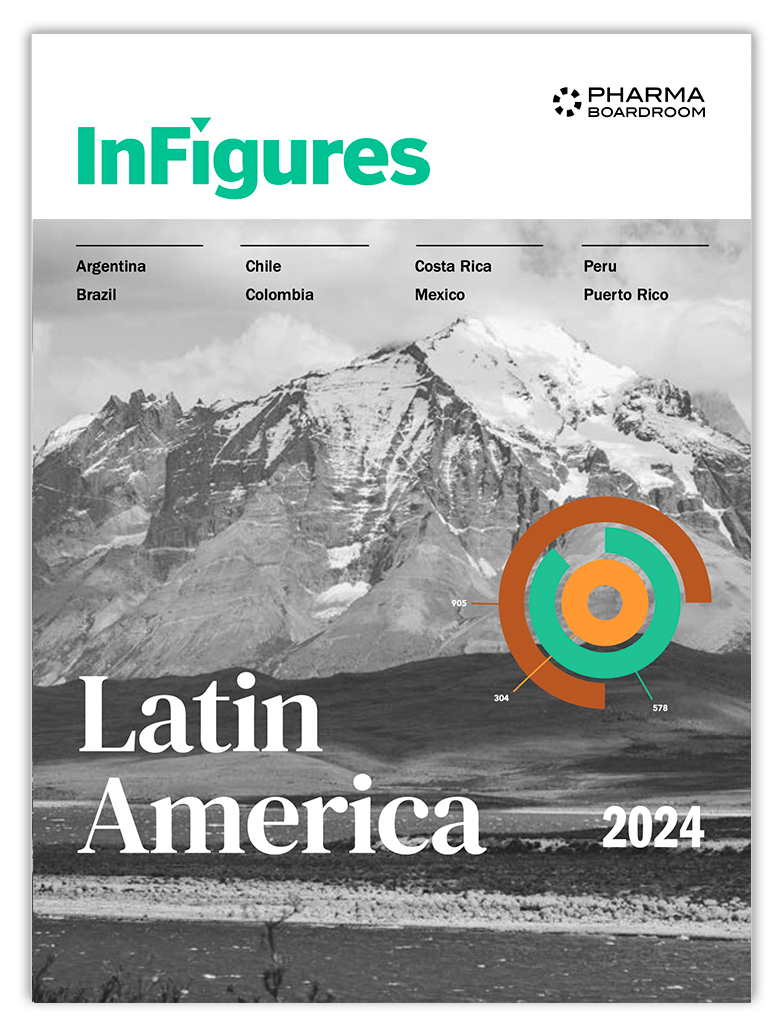Juan Fransisco Millán Sobaranes of Cetifarma, the council created by the pharmaceutical industry in Mexico for ethics and transparency, discussed the agency’s major milestones and its main priorities for ensuring transparency, notably with regards to patient groups, healthcare practitioners, and clinical trials.
You were part of the initial team which set up Cetifarma 11 years ago. What have been the critical milestones on Cetifarma’s journey that have transformed this pioneering self-regulatory compliance agency into a strong and respected organization?
Our ability to largely and enduringly involve the corporate compliance officers of the industry undoubtedly stands as a critical success that has allowed the pharmaceutical industry in Mexico to build and then enhance an efficient and respected autonomous compliance body like Cetifarma. To reach this objective, we set up the Compliance Group of Mexico, which includes all the compliance officers of the companies, industry associations (AMIIF and ANAFAM), and CANIFARMA, the National Chamber of the Pharmaceutical Industry integrated by national and multinational companies established in the country. Over the eleven years of existence of Cetifarma, the long-standing commitment of these companies’ officers has been ramping up and fostering the joint development and implementation of Cetifarma’s Codes of Ethics and Transparency, as well as the creation of related training programs. Furthermore, integrating compliance officers at the core of our development strategy also helped us to ensure a more stringent compliance of these companies’ daily practices with Cetifarma’s Codes, which has been absolutely paramount to effectively bolster an emerging culture of ethics and transparency among the Mexican pharmaceutical industry.
The companies’ compliance officers also now constitute the basis of our compliance system as our model is primarily based on risk prevention. We then work closely with them to establish a rigorous mapping of the companies’ activities and precisely identify the ones that display the highest risks to infringe our Codes.
Achieving this long-term commitment of the industry to Cetifarma’s objectives was obviously no bed of roses: transforming mentalities cannot be realized over a short-term horizon and requires daily and tireless efforts to really see any major improvements arising. Our objective has always been to ensure that developing a compliance culture isn’t only a sole and isolated objective of Cetifarma, but that it also steadily becomes part of the core culture of these companies. In the meantime, we also had to handle the fact that most of the companies were developing and implementing their own corporate code of ethics and transparency, usually from a global standpoint. In this regard, ensuring the sustainability and the consistency of our compliance effort was absolutely critical. Fortunately, most of the compliance officers that are currently involved in our activities have been holding this position for many years, while during the first years of Cetifarma, we unfortunately had to frequently deal with the short internal turnovers that often characterize the private sector.
[Featured_in]
What has been the importance of international partnerships in Cetifarma’s strengthening?
Cetifarma has for instance been part of the Code Compliance Network (CCN) since it was effectively set up by the International Federation of Pharmaceutical Manufacturers and Associations (IFPMA) in 2006. Being part of such an international network has been extremely important to us in order to anticipate the challenges that the most mature markets such as in North America or the European Union were already facing. International collaboration is also critical to ensure international companies are not facing any compliance disruptions while operating within the same geographical region. This is even more important in Mexico, as many international companies have chosen our country as their regional hub for Latin America, while the Mexican pharma industry also is increasingly exporting its products to other territories, in the Americas or elsewhere. In this regard, we have for instance been working since 2011 in the Business Ethics for APEC SMEs Initiative lead by the Asia-Pacific Economic Cooperation (APEC), to jointly develop a Code of Conducts for biosimilar manufacturing, being that these products are crucial to many Mexican pharmaceutical companies and their export strategies.
Finally, these strong international ties also give the opportunity to other countries to benefit from our experiences and expertise. The European Federation of Pharmaceutical industries and Associations (EFPIA) was for instance particularly interested in getting a clear overview of Cetifarma’s achievements, performance as well as the main challenges we faced, as our European partners would like to follow our example and develop a similar self-compliance model for their own industries.
Mexico’s industry was indeed among the firsts in the world to set up its own self-compliance body for ethics and transparency. What advice would you give to these other countries that would like follow Cetifarma’s example?
Of course, implementing an autonomous compliance body is highly linked with the key specificities of the domestic industry and the regulatory landscape in force in the given country. Nevertheless, it should be highlighted that the decision to create a self-compliance agency like Cetifarma can only come as the expression of a strong and clear commitment of the entire industry to develop and implement clear principles of integrity – and to strictly comply with them. When it comes to self-regulation, reaching credibility and positive outcomes can only be obtained through concrete measures: intentions alone are not enough.
All things considered, the most crucial success factor probably was the mutual trust and the collaborative approach that we have been able to develop with Health Authorities, specially with Cofepris, Mexico’s sanitary and regulatory authority, through a Co-regulation Agreement signed on October 2012 between CANIFARMA,COFEPRIS and CETIFARMA. Without Cofepris’ openness to see such a pioneer initiative emerging and its willingness to find common solutions, Cetifarma would probably have never existed, and we would not be in the position to drive the industry to new ethical heights.
What do you identify as the remaining rooms for improvement in order to further strengthen Cetifarma’s impact and efficiency?
If over the last eleven years we have been able to foster a sound and increasing collaboration with local and international agencies, the private and the public sectors, developing stronger partnerships with patient organizations in Mexico is high on our agenda.
We have nevertheless already managed to reach a certain level of transparency in this regard, as both patient organizations and the industry are now perfectly aware of what the Mexican regulation allows or not in terms of interactions. According to Cetifarma’s Codes, pharmaceutical companies are for instance not allowed to directly promote their products toward patient organizations, but it doesn’t mean they are not allowed to provide them with disease-related knowledge. When a company decides to support a Mexican patient organization, they also need to first get the organization’s approval to enter in contact with them, which provides the patient organization with the full freedom to accept or refuse this partnership.
[related_story]
Mexican population is heavily affected by a non-communicable disease burden, which notably comprises very high rates of diabetes and obesity among our population which renders more complex their treatment than other diseases. In this regard, pharmaceutical companies hold a remarkable expertise that could be extremely useful to public authorities, healthcare providers, and patient organizations, which also suffer from the scarcity of public health spending in our country.
Pharmaceutical companies however still need to reach a higher level of transparency in their relationships with the patient organizations, but this situation is promisingly and gradually evolving. In this context, Cetifarma is also collaborating with patient organizations to better understand their needs and their transparency expectations toward the industry, as well as the kind of support they precisely require from the pharmaceutical companies.
In 2014, Mr. Carlos Campillo Serrano, former president of Cetifarma, explained that the organization was partnering with the National Academy of Medicine to improve the quality of the interactions between the pharmaceutical companies and the Mexican physicians. How much progress has been made in this regard?
The Mexican National Academy of Medicine recently published a comprehensive transparency guidelines that clarifies the key practices considered as ethical and transparent interactions between the healthcare practitioners and the industry. To develop these recommendations for physicians, the National Academy of Medicine set up a special committee, CETREMI, in which two independent members of our board were involved. This new framework of ethical statements is of the utmost importance, as –for the first time- we can now build on a clear strategy to further improve and solve some existing tensions that still underpin these interactions.
There is still a substantial gap to fill to be able to claim that the pharmaceutical industry is fully transparent in the way it operates with healthcare practitioners. Although the recent and tremendous improvements of the industry also need to be acknowledged and praised, this new Code will be extremely useful to reach a higher level of transparency in this regard.
What will be your main priorities to further improve the ethics and transparency level displayed by the pharmaceutical industry in Mexico?
In the upcoming months, we will implement a “Full transparency” program: pharmaceutical companies will have to publicly display and detail on their website what kind of support they bring to patient organizations and healthcare professionals. This new measure will represent a very important step forward in terms of ethics and transparency.
Finally, we want to further extend the scope of action of our codes of conduct to include the disclosure in clinical trial activities. We want to ensure that companies publish the results of the clinical research conducted in Mexico, whether the outcomes are positive or negative, as it is crucial that healthcare professionals can get a public access to the results of these clinical investigations conducted through our domestic healthcare network.
Finally, our overarching objective is to continue to foster the professionalization of the compliance function in Mexico, while we will intensify our efforts to ensure that medical education activities sponsored by the industry are of the utmost quality and truly help the Mexican healthcare system to strengthen its expertise and knowledge.







